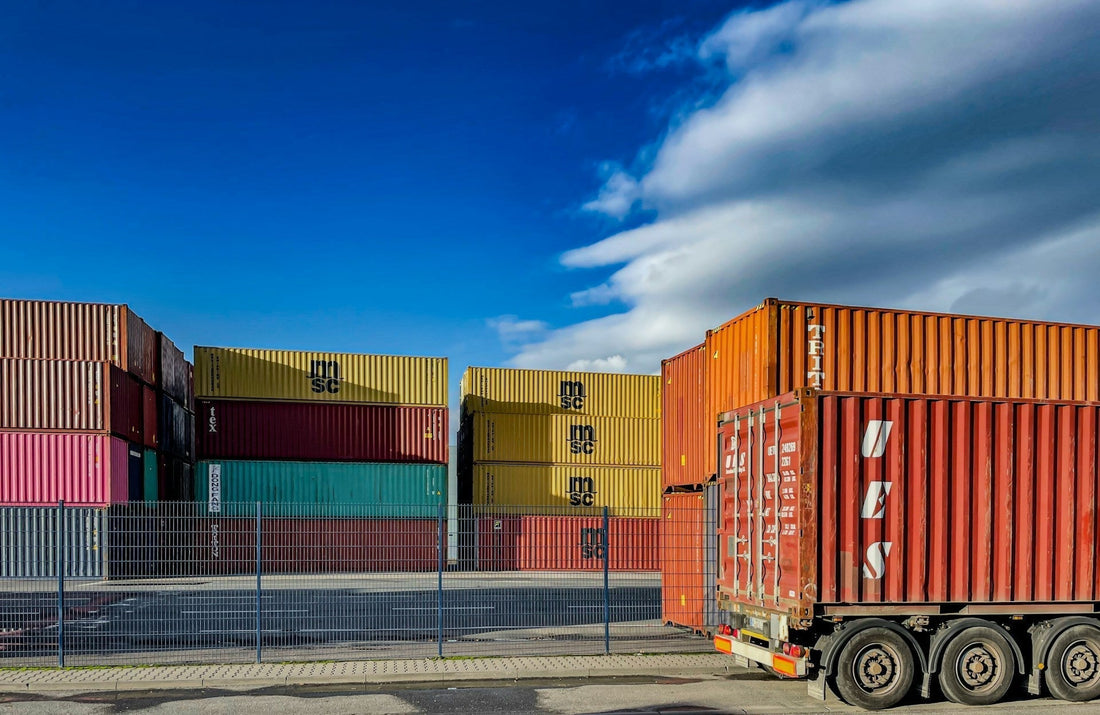The explosive growth of e-commerce fulfillment has fundamentally transformed warehousing needs. At the same time, major retailers are expanding their distribution networks to meet growing consumer demands.
In fact, today, there are an estimated 180,000 warehouses globally! And as numbers grow, supply chains become more complex. As a result, warehousing and distribution need to work together smoothly so that available inventory can reach the market fast and efficiently.
Let’s take a closer look.
What Is Warehousing And Distribution?
Warehousing is all about storing inventory in a well-organized space - usually a dedicated facility - until it's time to move it elsewhere. Distribution is the step that comes after. It’s the planning and coordination behind getting those goods from their resting place to a customer, a shop, or another business.
Distribution, though, is far more than just loading trucks. In fact, it’s one of the most intricate processes in forward logistics as it involves planning and coordinating transportation, fulfilling customer orders accurately, and ensuring timely deliveries at optimal costs.
Similarly, effective warehousing involves a range of diverse operations: receiving goods, ensuring quality standards, sorting and organizing items, maintaining precise inventory records to track quantity and location, and retrieving goods when needed for distribution or fulfillment.
Because these systems can get quite complex - often involving several locations and intermediaries - many businesses now rely on third-party logistics (3PL) providers to help simplify things and keep everything running smoothly.
Is Warehousing Part Of Distribution?
While closely related and often used interchangeably, warehousing and distribution aren’t exactly the same thing. They’re closely connected, but serve different purposes.
The typical function of a warehouse is to safely store products and ensure consistent inventory levels.
Distribution, on the other hand, is what connects those stored goods to the outside world.
Even though they differ, warehousing and distribution are most powerful when they work together, making inventory easy to access and quick to deliver.
What Is A Distribution Center?
A distribution center is a specialized logistics facility that acts as a dynamic hub for storing finished goods and quickly processing them for outbound shipment to fulfill customer orders. Unlike traditional warehouses focused on long-term storage, distribution centers are built for speed and efficiency, often involving cross-docking, kitting, order fulfillment, and packaging.
For e-commerce brands that ship directly to customers -or need to fulfill online orders quickly- distribution centers play a key role. Many are run by 3PL providers who connect their systems directly to online stores, helping speed up deliveries and keep customers happy.
In fact, on a global level, around 85% of e-commerce brands rely on 3PLs, while in North America, adoption stands at roughly 46%.
Distribution Center Vs Warehouse: A Closer Look
Understanding the difference between a warehouse and a distribution center can help you figure out what setup best fits your business needs.
|
Aspect |
Warehouse |
Distribution Center |
|
Primary Function |
Holds products for long or short-term storage. |
Stores and quickly processes goods for delivery. |
|
Activities |
Storage and inventory management. |
Handles packing, cross-docking, kitting, packaging & order fulfillment. |
|
Flow Rate |
Products are often stored for extended periods. |
Fast product movement from storage to shipping. |
|
Supply Chain Role |
Less focused on direct consumer interaction; supports inventory management. |
Acts as a liaison between suppliers and consumers; integrates with the market. |
|
Order Processing |
Doesn’t usually handle order fulfillment. |
Handles order processing and transportation management. |
|
Complexity |
Less complex, with fewer operational functions. |
More complex with multiple tasks running - often simultaneously. |
|
Use Cases |
Suitable for raw materials, large bundles, long-term storage, and distribution needs. |
Ideal for finished products that need quick delivery to vendors or consumers. |
In essence, while warehouses focus on safely storing inventories until needed, distribution centers are uniquely responsible for ensuring timely deliveries and integrating seamlessly with broader logistical operations.
How Warehouse Distribution Contributes To Effective Supply Chain Management
For large-scale operations, strategic warehouse distribution systems impact a company’s bottom line and competitive edge. Here‘s how:
Location Matters
Most distribution centers are placed close to highways, ports, and airports. Being near these transport hubs means companies can ship to more places, more quickly. That cuts delivery times, trims costs, and keeps customers smiling.
Smarter Storage
Modern warehouse distribution systems make the most of their space. Think pallet racks, organized aisles, and easy access to fast-moving goods. Some places also offer climate-controlled options to protect sensitive items.
Inventory In Real Time
Keeping track of stock in real time is one of the biggest benefits. This kind of visibility helps prevent costly stockouts or overstocking. With the right systems in place, companies can respond to demand surges quickly and keep everything flowing smoothly.
Quality Every Step Of The Way
Quality checks start the moment a product arrives. Teams inspect goods, double-check labels, and make sure everything is in line with industry standards. That kind of attention protects product integrity from start to finish.
Order Fulfillment Made Simple
Once an order is placed, it’s picked, packed, and shipped - often that same day. A well-run fulfillment process means fewer mistakes, fewer delays, and a better customer experience.
Third-Party Logistics: Elevating The Warehouse Distribution Experience
At the heart of any strong supply chain is good warehousing and distribution. At Green Wave Electronics, we specialize in helping electronics businesses grow through smart 3PL services - handling both eCommerce fulfillment and B2B distribution with care.
We know time matters. That’s why we ship same-day from our Atlanta Distribution Center for all orders placed before 2:00 PM.
We also use Seller Fulfilled Prime, which helps get your products seen and delivered faster on major marketplaces like Amazon and eBay.
Beyond shipping, we also help you maximize the benefits of your warehousing with strategic redistribution of excess stock, enabling you to reduce costs and manage dispersed inventory more effectively.
And that’s just part of what we do! At Green Wave Electronics, we provide comprehensive logistics services to optimize the value of your products throughout their entire lifecycle. Want to find out more? Contact us!



